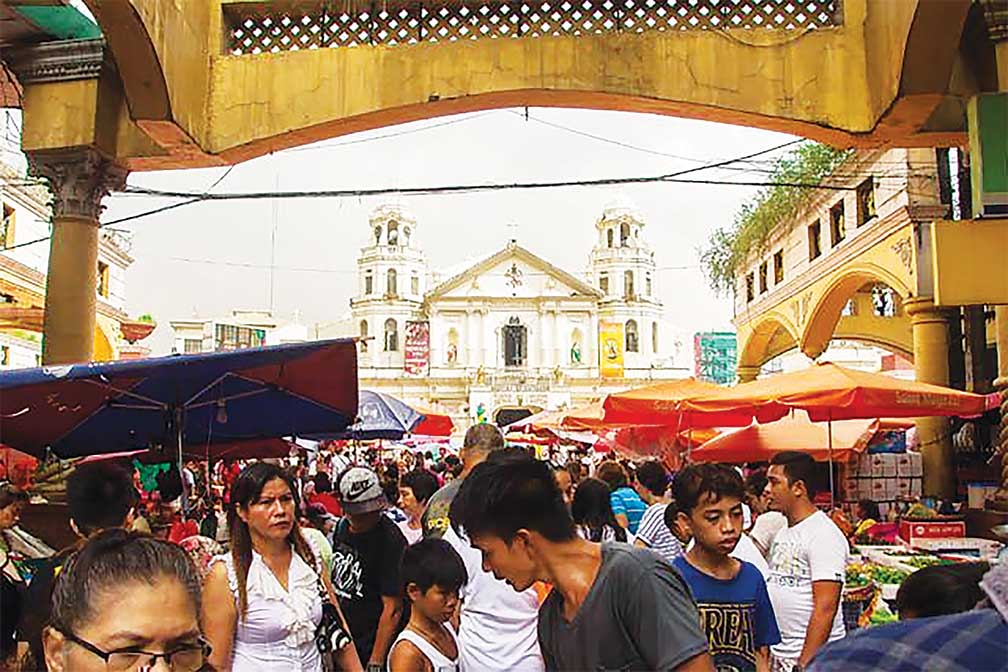I have a clear memory of Quiapo in the mid-60s. Quiapo Church was were aunts and other relatives lighted votive candles and recited novenas before hearing regular Friday and Sunday masses.
As a working student for a couple of years at the technical school along Mendoza Street (now Zacarias de Guzman Street), I often watched with awe that long procession of the Black Nazarene.
When I saw that sea of humanity extending from Quiapo church and beyond with devotees kissing the glass partition in deep adoration, I must say I was moved, even touched.
In the mid-60s, Quiapo church was where you pass before you tread on Carriedo Street, before reaching Avenida Rizal to watch movies like The Sound of Music, Dr. Zhivago and The Singing Nun, among others.
I bought household items from my first 1971 Graphic salary along those sidewalk stores outside Quiapo church. By then, I had graduated from my bed space arrangement and could afford to rent a room.
That boarding house along Farnecio Street in Quiapo had a music store on the ground floor. I connected easily because I took piano lessons from a certain Ms. Asuncion along Mendoza Street at the back of Times Theater.
As a working student, I thought I could afford a voice lesson and had one from the studio of one Mila Esguerra Zulueta on Laurel Street just across Malacanang Palace. I believed it was near the street where one side of the not so opulent Romualdez family lived and which side of the family a future First Lady would emerge.
Bed space in a boarding house just in front of the technical school was all I could afford at the time.
My first literary output was born in that boarding house. I wrote feverishly at the time and was turning out one short story after another not just for Graphic, where Ninotchka Rosca was then literary editor, but also for other publications like Nation (I believe one E.P. Patanne was the literary editor) and Now Magazine, edited by Norma Miraflor, among others.
My feature articles appeared frequently at the Asia Philippines Leader edited
by Nick Joaquin who had since then left the Philippines Free Press.
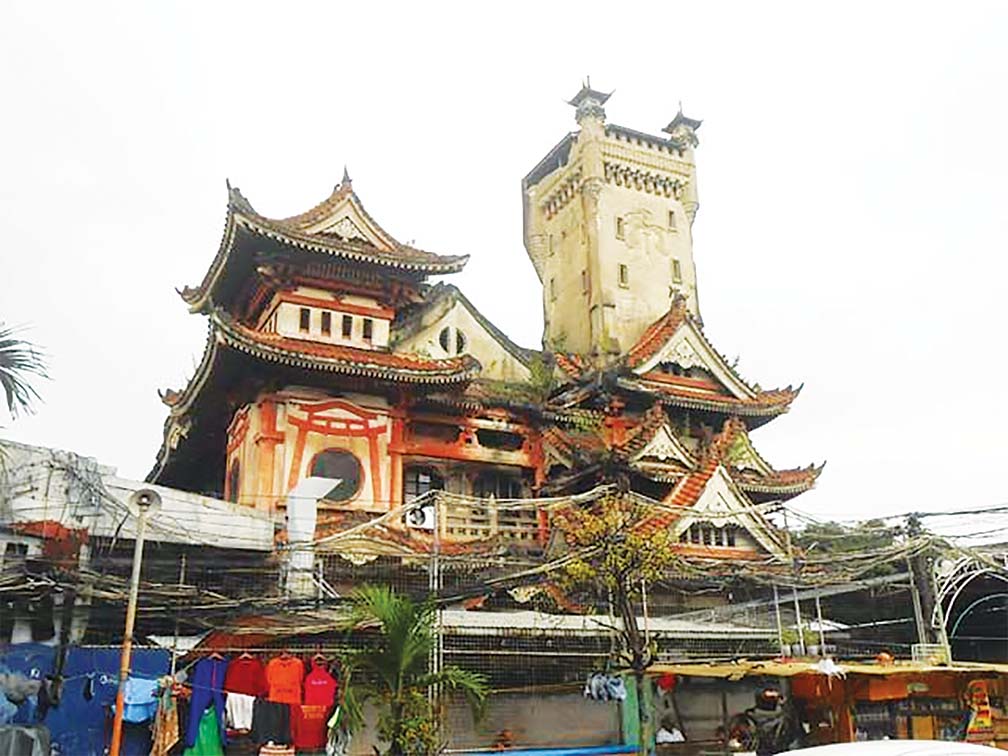
True, this boarding house along Mendoza Street in Quiapo (Now Z. de Guzman Street) held a lot of memories. Boarders had assorted backgrounds—mostly from the provinces sent by their parents to study. I was the self-supporting student.
VIRTUAL INITIATION
On weekends, someone would treat the boarders to drink and what followed were untold stories bluntly told by co-boarders.
A boarder from Cebu said someone lured him to bed for a hundred pesos (that’s big money in 1969) and did it for fun.
Another said two university professors shared him and it covered his monthly allowances when his parents failed to send money.
When stories are told with drinks, you get all the details unedited. They described bodies in tight embrace, foreplays in the dark before the finale characterized by heavy breathing. All said, the stories became my virtual initiation to sensuality. They were things I only read about and told by friends who actually went through the real-life experience.
There was one good-looking boarder from Zambales who looked like a young Tom Cruise. He was married and had a daughter who visited him once a month.
In the beginning, I didn’t know what he did for a living. He slept all day and was nevertheless well-groomed in the evening. A car picked him up at around 8. The few times I’d seen the mysterious passenger, he looked like the rich gentleman of the old school. When my co-boarder joined him, he seemed more than happy. Still, I had no idea why a well-off man pushing fifty had to pick up a young man in our boarding house.
Early evening, the boarding house smelt of expensive perfume. (The rest of us boarders made do with baby cologne going to school.)
It soon became clear what he did for a living. I didn’t hear of escort service and boys on call in the late 60s but his work was closely associated with that calling of the night.
One time, he said he had a place for me where I could write alone on weekends without being disturbed by co-boarders. He said he was going up to Baguio with his friend and I could spend a couple of nights in that abode. The place had a Spanish name and his room was full of antiques. It was easy to see his special friend was a rich antique collector.
There was nothing like that old boarding house. I wrote my first few short stories in that place and my first poems. It was witness to my first love and my initiation to sensuality as told by co-boarders who went through the experience.
HIDALGO STREET
I transferred to another school also in Quiapo named after a former president. I ended up in the school paper, in the college glee club and theater guild.
The school theater guild had me as King Fernando and award-winning actress Lorli Villanueva as my Queen Valeriana in one staging of Ibong Adarna. In one rehearsal, Lorli asked me to do several rounds in the auditorium in boots. “You don’t walk like a king. You walk like a probinsyano.”
When I continued college schooling, this time in a university named after a former Commonwealth president, I became thoroughly acquainted with Hidalgo Street and the nearby streets leading to the university belt.
I’ve always wondered why those old houses along Hidalgo Street looked like replicas of an old town.
From readings, I learned that Hidalgo Street in Quiapo was the most beautiful street during its time from 1800s to the 1900s.
An account by Ma. Patricia Brillantes-Silvestre revealed the introduction of opera and Spanish and Pilipino zarzuelas started in this Quiapo district.
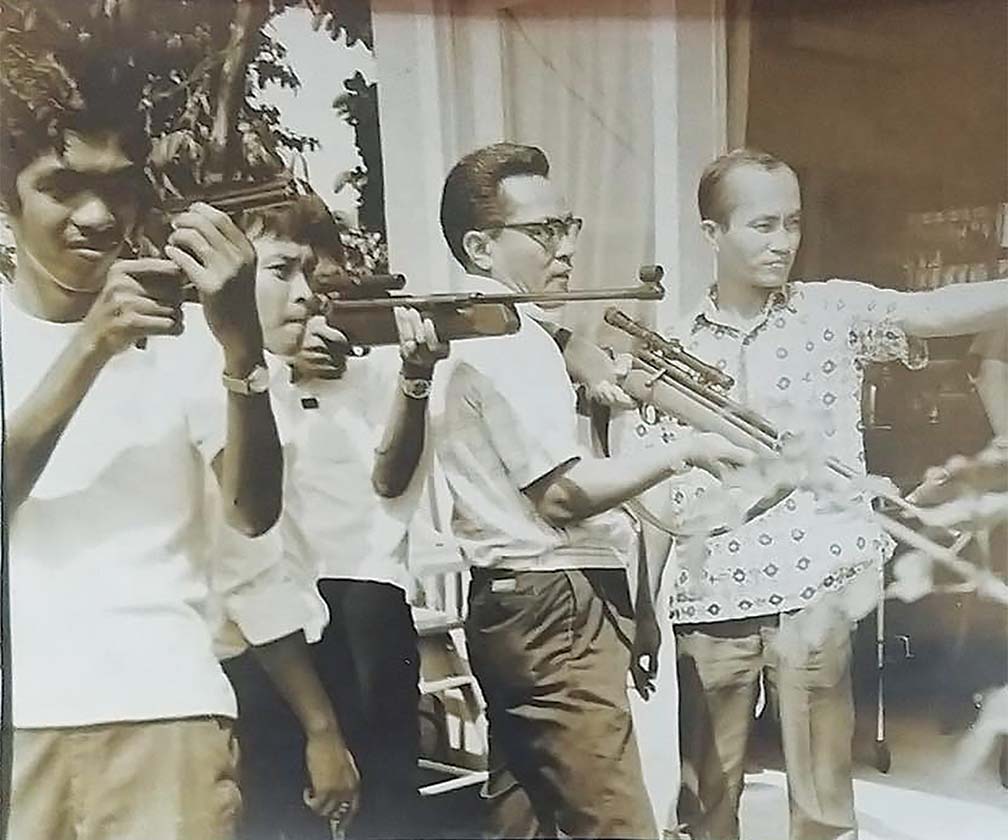
The early documented theaters in Manila during the Spanish to American periods were the Teatro Lírico (1839), Teatro de Tondo (1841), Teatro Español (1846), and Teatro del Principe Alfonso (1862).
Others followed like the Teatro de Variedades (1880), Circo Teatro de Bilibid (1870), Teatro Filipino (1880), and Teatro Popular (1893).
Silvestre noted that the private houses along Hidalgo Street played a vital role in the preservation and nurturing of classical music.
Chamber music as practiced by early converts of classical music had families filling the azotea (balcony), the kitchen and stairway, the late customers standing or squatting just to be able to listen to what the group called Musica Filipina.
The illustrious Quiapo families then were the Aranetas, the Legardas, Tuazons, and Nakpils who opened their doors to evening concerts, balls and other informal occasions for music making.
While I was studying at MLQU, I traced the source of that live music and it came from what I presumed was an old house of the Legardas just a few doors away from the university.
The sound was magical but at that time, I didn’t know anything about classical music. I was fascinated by it. I was acting by pure instinct.
True, Quiapo was where I lived, studied and survived as a working student in a technical school.
FROM HOUSEBOY TO STUDENT ASSISTANT
Because at some point in my college life, I had to stop schooling to earn a living. I ended up applying as a houseboy for a family who owned a vocational school. I found out the school offered basic college courses. I worked as houseboy in exchange for free schooling.
In the morning, I washed the car, trimmed the garden, and helped in housecleaning.
One trophy in the living room that I dusted everyday had this label: Miss Rosalinda Yulo, third runnerup, Miss Philippines 1957.
True, she was a beauty. Sometimes I caught myself staring at her after she emerged from the bathroom and while taking breakfast with her husband. As I recall her now, she looked like Mari-Mar of the late 60s.
There was a separate quarter for household helpers. I stayed with the gardeners and other houseboys in an adjacent makeshift house. There was another mansion in the compound owned by the school owner.
In that mansion, I saw my first shooting of a horror film starring Amalia Fuentes. First time I saw a movie star up close.
The odd job was good enough material to write my first article in the 1967 issue of the Sunday Times Magazine. It was called “Confessions of a Houseboy” where I used a pen name. The details including the description of the house and owner caught the attention of my employer.
Did you write this? He asked me one breakfast time while showing me the magazine. Yes, I did, I meekly replied.
From the article, they found out I borrowed assorted books and listened to classical music at the Thomas Jefferson Library in Sta. Mesa after household chores. They could not imagine a houseboy watching concerts at the USIS library in Sta. Mesa and still finding time to watch theater rehearsals of Zeneida Amador and Baby Barredo at St. Joseph’s College in 1967. (I guess this was the year Repertory Philippines was born.)
When my employers found out I had writing talent, they said they could offer me free schooling while working as student assistant in their school which offered basic college courses. I left my houseboy life to resume my interrupted college studies while doing work as executive assistant to the vice-president of the school.
Some personalities taught in that Quiapo school namely Gilbert Guillermo founder of Jingle Magazine, UE Dawn staffer and sometime Romblon politician Manuel Martinez and province-mate and Ateneo law graduate Romulo Atencia who became regional trial court judge in the island.
FIRST LOVE
It was during the sudden turnaround of my life from houseboy to school
executive assistant that I had my first spontaneous encounter with what I
would call my first true love.
I must have been 17 going on 18 and totally unknowing of the ways of love. At the time, I was already editing the school publication while mounting school events like afternoons of poetry and music.
I won a Metro Manila essay writing contest sponsored by the BIR and I was surprised to know that one of my favorite writers—Carmen Guerrero Nakpil—was in the jury. I placed second in an extemporaneous speaking contest and beat contestants from famous schools. On the side, I was mounting school symposia on the works of Filipino authors like Kerima Polotan and Nick Joaquin.
My first infatuation must have been initially fascinated by the kind of things I do in the campus. She was showing support all the way. One time, she accompanied me to the UP campus in Diliman to see playwright Wilfredo Ma. Guerrero to ask permission to do a stage reading of one of his plays, Wanted: A Chaperone. The playwright (now National Artist for Theater) showed up in the living room in his underwear and managed to get a bathrobe when she found out I was with my girlfriend.
Last thundering words from Guerrero: “Don’t publicize your production before you can get permission from the playwright!”
I never got to mount that play. On August 2, 1968, a 7.3 magnitude earthquake struck Casiguran town in Quezon and Metro Manila was not spared. It was the year hundreds died from the collapsed Ruby Tower.
The technical school survived but its top floor where I used to mount cultural events was declared dangerous. The school rented another building along Claro M. Recto near what used to be Cinerama.
At this time in the mid-60s, I just saw the film version of South Pacific at the New Frontier Theater and fell in love with its music. I bought its scores from a Quiapo music store in Barbosa St. and promptly took voice lessons from one Mila Esguerra Zulueta who lived near Malacañang. Because I could not really afford it, I stopped but not without learning to sing with piano accompaniment some South Pacific favorites like Bali Hai, Some Enchanted Evening and Younger than Springtime, among others.
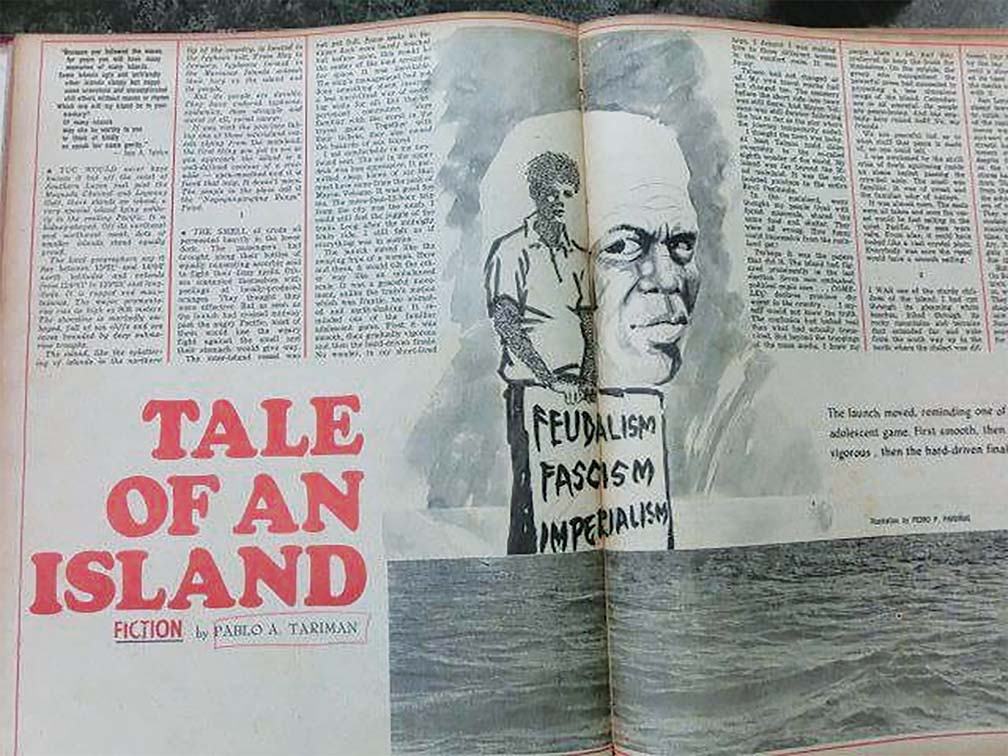
At first, I thought my college friend was only interested in the things I do and that it was nothing but mutual love for poetry and music. It turned out to be pure love knocking at my door for the first time.
At the time in 1968, I had a P30 weekly allowance and all we could afford was a leisurely walk at Rizal Park on weekends and ice cream.
Here was someone always behind all your school endeavors and with whom I confided everything. She knew I was a houseboy before I was a school assistant getting free tuition at the time. She said she was a former novice of the Carmelite. At some point in our relationship, we frequented a convent between Aurora Boulevard and N. Domingo where she spent years before we met.
At the time, Rizal Park was all we could afford for what passed for our regular date. I’ve never dated before this. I was busy with school papers and school events and I was also executive assistant of the school vice-president on the side. On top of that, I was obsessed with writing and I was determined to be published.
What 17-year-old would have time for romance when all his time were eaten by school assignments and part-time school job? What passed for romance was a leisurely walk in the park. I recall I loved the intimate conversation. It surprised me that I could confide to someone without being intimidated. The company was always warm. It turned intimate at some point. It was all new for me and a new chapter in my young life opened up. I was 17 and turning 18. At that time in my life, I had very little knowledge of real love and intimacy.
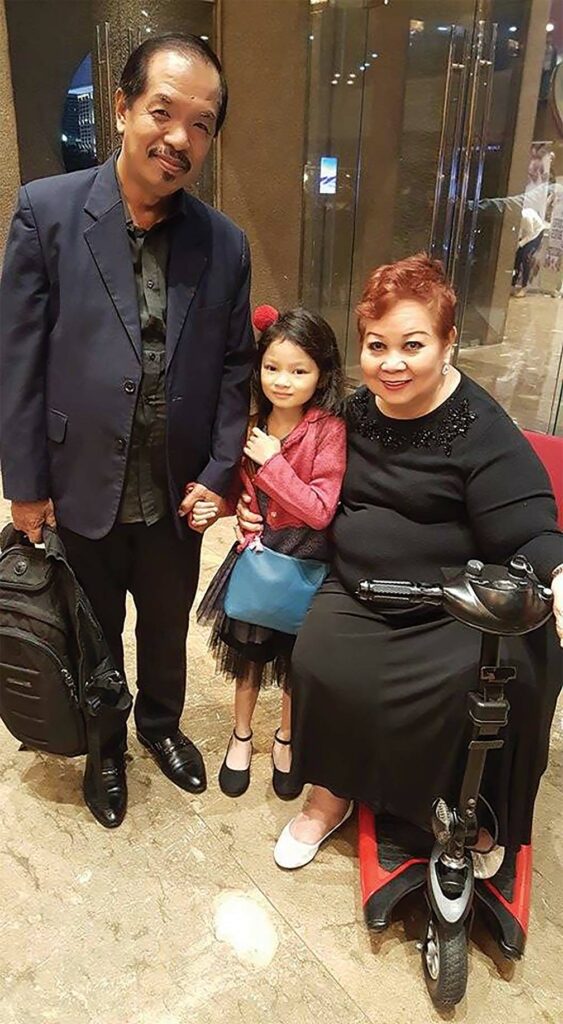
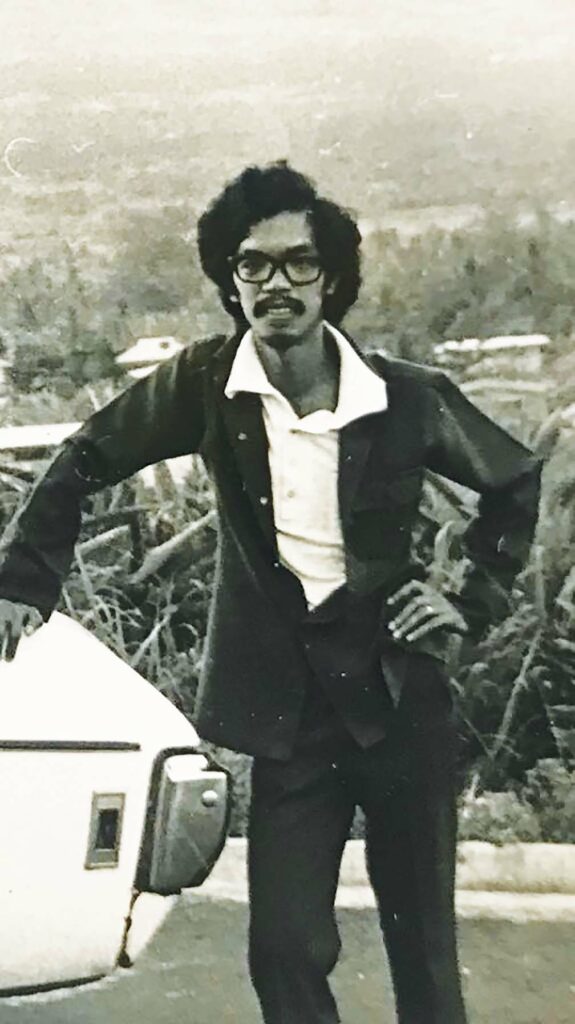
Almost every day, I accompanied her when she went home to her Caloocan address and always telling me I couldn’t come in. (Her brother and his family would not like it.)
The years went fast.
In time, she also had to stop schooling to help support her family. She had to work as a stewardess of a national airline. She topped the cabin attendants training class and I offered to write her valedictory address.
As soon as I have heard her valedictory address as cabin attendant in that PAL auditorium along Ayala Avenue, I left knowing we had to live new chapters in our lives.
It took a while to accept our relationship was over. I kept going to her Caloocan address and she was always out. Many years later, I learned she married a doctor. I was not prepared for my first moment of truth. One night, I had one drink too many and went home broken-hearted.
I was 18 and turning 19. How’s that for a first heartbreak?
(Of course, I learned much later that a former seminarian and former copy editor of the Philippines Free Press and the Inquirer also courted her. He passed away, recently due to COVID-19.)
GRAPHIC IN THE ‘70S
On my last year in college, our MLQU journalism professor Angel Anden told me Graphic Magazine had an opening for a proofreader. I jumped on it. At that time, I would do anything to work for a national publication.
By this time, I could afford a better boarding house recommended by a college chum.
It was then that I left Mendoza Street. and transferred to Angela Building, along Farnecio Street, also in Quiapo.
My life in Graphic Magazine in early 70s started on a good note. After my proofreading chores, I accepted editorial assignments and was writing weekly on assorted subjects from showbiz to politics.
But as fate would have it, martial law closed Graphic in 1972.
It was my first eight years in Quiapo, part of a decade of first love, first survival jobs, years in dingy boarding houses, first exposure to tales of sensuality and my first short story acceptance slips from Ninotchka Rosca and Norma Miraflor. It was the decade my first article was accepted by the Philippines Free Press and got paid in advance!
I didn’t leave Quiapo when I found a new job in the writers’ pool of Kit Tatad’s Department of Public Information in Malacanang.
I remained a boarder along Farnecio Street until it was time to leave Quiapo for good and move to Bicol for a new job assignment.

